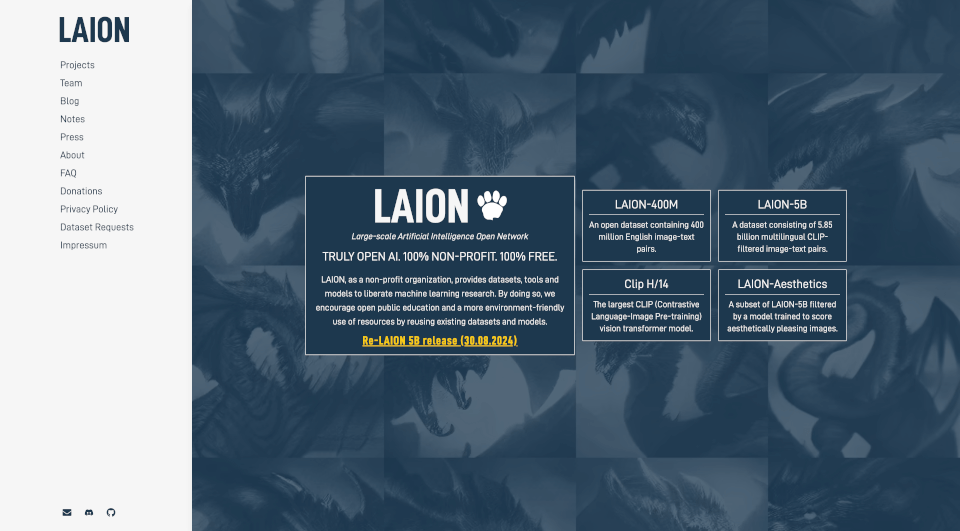What is Laion?
The LAION (Large-scale Artificial Intelligence Open Network) is a pioneering non-profit initiative aimed at democratizing access to machine learning resources. Through a commitment to transparency and accessibility, LAION provides a vast array of datasets, tools, and models, primarily focused on enhancing public education in AI research. The organization champions the use of existing datasets and models to promote a more environmentally responsible approach to resource utilization.
What are the features of Laion?
-
LAION-400M: This open dataset encompasses 400 million English image-text pairs, making it a substantial resource for researchers in machine learning. The dataset's versatility allows it to be applied in various domains, from natural language processing to computer vision tasks.
-
LAION-5B: Comprising an impressive 5.85 billion multilingual CLIP-filtered image-text pairs, this dataset offers unparalleled data diversity. This extensive collection enables the training of models capable of understanding and generating contextual information across multiple languages, thereby enhancing interoperability in AI applications.
-
Clip H/14: A cutting-edge model, Clip H/14 is the largest CLIP (Contrastive Language-Image Pre-training) vision transformer model available. Its architecture supports a wide range of tasks, empowering developers to build applications that require deep image-text understanding.
-
LAION-Aesthetics: A carefully curated subset of LAION-5B, this dataset includes images filtered through a specialized model trained to score aesthetically pleasing visuals. This feature is particularly advantageous for applications in design, marketing, and content creation where visual appeal is paramount.
What are the characteristics of Laion?
The datasets and models provided by LAION boast several unique characteristics:
-
Open Access: Being a non-profit organization, LAION ensures that all resources are freely accessible to researchers, educators, and developers, fostering an environment of open innovation.
-
Multilingual Support: With datasets like LAION-5B, LAION supports a wide range of languages, making it easier for users across the globe to engage with AI technologies.
-
High Data Quality: LAION’s rigorous filtering processes guarantee that users have access to high-quality datasets that can significantly reduce noise during the training of AI models.
-
Scalability: The vast volume of data in LAION's datasets allows for scaling projects efficiently, catering to both small-scale experiments and large-scale commercial applications.
What are the use cases of Laion?
The resources offered by LAION can be utilized in diverse scenarios:
-
Academic Research: Researchers can use LAION datasets for conducting experiments in natural language understanding, image recognition, and multimodal learning.
-
Content Creation: Professionals in advertising and marketing can leverage the LAION-Aesthetics dataset to identify and utilize visually appealing images for campaigns, enhancing engagement.
-
Product Development: Developers can build applications that integrate both language and image processing capabilities, utilizing models like Clip H/14 to enhance functionalities.
-
Educational Purposes: Institutions and educators can utilize LAION’s datasets for teaching purposes, providing students with hands-on experience utilizing real-world data.
-
Creative Industries: Artists and designers can benefit from LAION resources to explore new creative avenues, making use of the aesthetically filtered images for inspiration and projects.
How to use Laion?
To leverage LAION's resources:
- Visit the official LAION website.
- Select the dataset or model relevant to your needs.
- Follow the instructions for downloading or accessing the dataset.
- Utilize the datasets and models in your research or application development, adhering to any usage guidelines provided.








